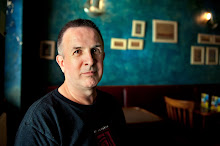In the last post we talked about the central role of the breath in rebirthing. Initially it is used to raise the level of our internal or ‘qi’ energy. This has the effect of highlighting any areas where there is resistance or a ‘blockage’ to the flow of energy through our body.
The explanation of how rebirthing works is best conveyed by the ‘Eastern’ model or explanation of the mind, body, spirit connection. This is not because rebirthing is in any way connected to Eastern practices, it isn’t. It is just that the actual experience of rebirthing accords best with the explanation provided by the Eastern model.
By the ‘Eastern model’ I mean the classic description of the subtle energy system that under lays traditional Eastern healing systems such as acupuncture, acupressure, shiatsu and reflexology as well as the various techniques of modern Western Energy Psychology. These include Emotional Freedom Techniques (EFT) and Tapas Acupressure Technique (TAT) amongst others. In this model a subtle ‘life force’ energy – known variously as ‘qi’ (Chinese, pronounced ‘chee’) or ‘prana’ (Indian) enters our body with each breath. It is then conducted around the body via a system of channels or meridians that branch into thousands of lesser channels known as ‘nadis’. The flow of this energy is said to be ‘blocked’ or, better to say, restricted, wherever muscular tension exists.
Whenever we experience a trauma or negative emotional experience we tend to physically ‘block’ or limit its impact upon us by tightening up our muscles and shortening our breathing. This instinctive reaction can become a permanent condition in the face of extreme or long standing threats and upsets. Clearly what constitutes ‘extreme’ or ‘long standing’ depends upon our age and experience. What we would judge to be extreme at the age of 4 or 12 differs considerably from our judgment of the same situation at the age of 35 or 65. Nevertheless, the blockage is formed when the experience first occurs and its effects can last a life time. In rebirthing, the birth process itself is thought of as the archetypal trauma that creates the psychological disposition for future problems. In addition, the early years of life find us in a very vulnerable position in the face of upsets, hurt and abuse.
This ‘highlighting’ of underlaying blockages is called ‘activation’, a term that refers to the re-activation of their related emotional affects. Ordinarily we attempt to ‘suppress’ old hurts by trying to hold them beneath the surface of consciousness through muscular tension and shallow breathing. Another common avoidance strategy is to distract ourselves whenever we become activated, hence much of our unnecessary eating!
Since our remembrance of emotional pain is neurologically the same as our initial experience of that pain, we are naturally reluctant to accept the activation of suppressed feelings. And yet we all recognize that suppression doesn’t work very well and exacts far too high a price in terms of our stunted abilities and lost opportunities. Fortunately there is an answer to this dilemma. Just as the breath is used to both suppress and highlight our underlaying painful feelings, we can learn to consciously control and use this capability during our breathing sessions.
Monday, February 18, 2008
Subscribe to:
Post Comments (Atom)


No comments:
Post a Comment